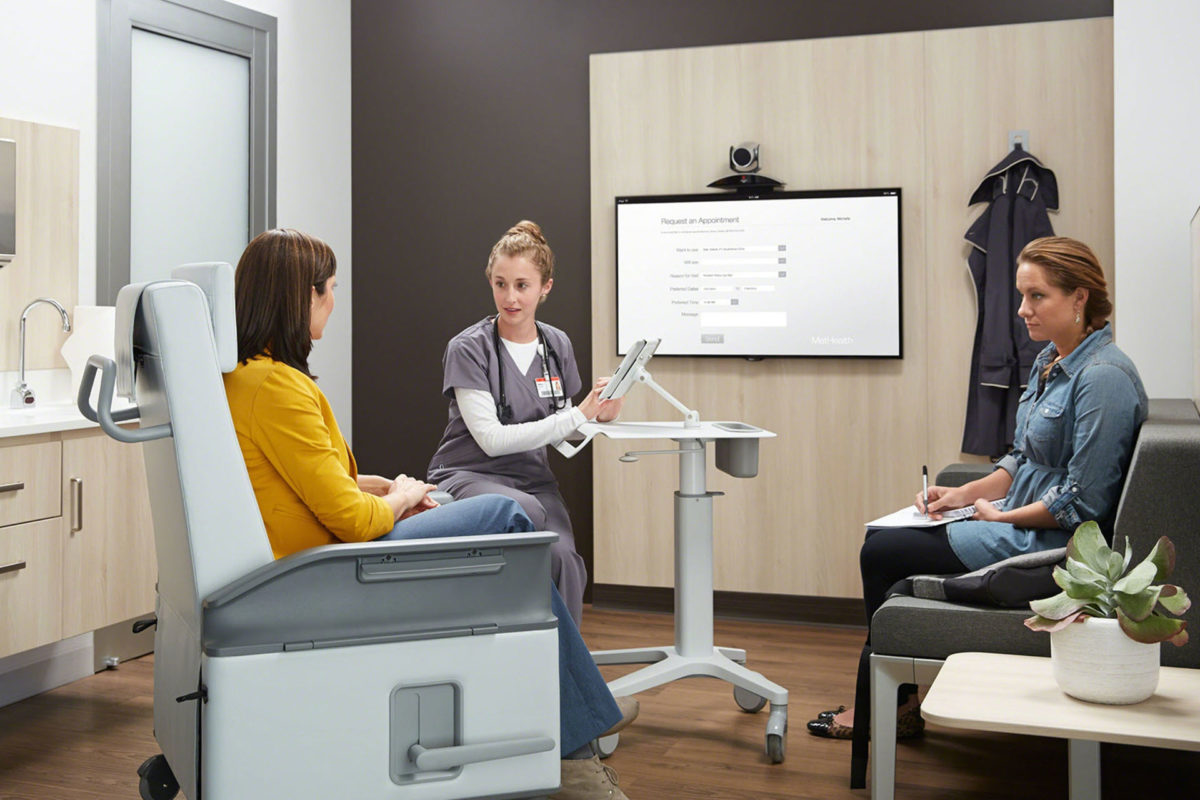
By Domenica Sheets, CID, IIDA
I recently attended Neocon, North America’s premier trade show and conference on commercial interiors, products and evolving design trends. This conference, which is held at theMART in Chicago each year, allows our Interiors team to stay on top of the trends in all vertical markets, including Healthcare. As someone who has spent many years working on Healthcare projects at TLCD Architecture, I was particularly interested in how my observations matched with those of Steelcase, one of the leading manufacturers of furniture for hospitals, offices and classrooms.
This last week, representatives from Steelcase Health, and our Steelcase Furniture Account Manager gave a presentation at TLCD Architecture on new solutions for healthcare spaces. As designers and architects for our healthcare clients, they emphasized the need to create spaces that support communication and collaboration between patients, clinicians and family members so that everyone becomes a mutual participant in the patient’s health. Additionally, there is increasing need for productive and comfortable waiting or “transition” spaces for the family members whose day may have unexpectedly been put on hold while taking care of their loved one.

As the “center” of the healthcare experience, exam rooms are not only for physical examinations, they are also used for consultations and for family members to receive instructions for at-home care. The typical exam room table is being replaced with residential-like recliners for the patient, and a comfortable lounge chair or sofa for the family member. The clinician is given an ergonomic stool and adjustable height table to remain at the same eye level as the patient and family member. Technology has also evolved and mobile carts for ipads or computer monitors can easily move to help the clinician face the patient and family member. The use of demountable walls (walls that can be relocated), and modular furniture can also support evolving technology and room uses.
Waiting or “transition” spaces are changing as well and play a significant role in improving the overall healthcare experience. Rather than row upon row of uncomfortable chairs facing one direction, today’s waiting room offers choices and supports a range of postures and activities. People waiting may need to pull out their laptop and work for a few hours, charge their phone, have a conversation, watch young children or take a rest.
It’s our role as Healthcare designers to accommodate these functions and provide furniture solutions that support a wide range of needs. I’m very excited to share and implement the new furniture introductions showcased at Neocon with my clients and the customers they serve.

